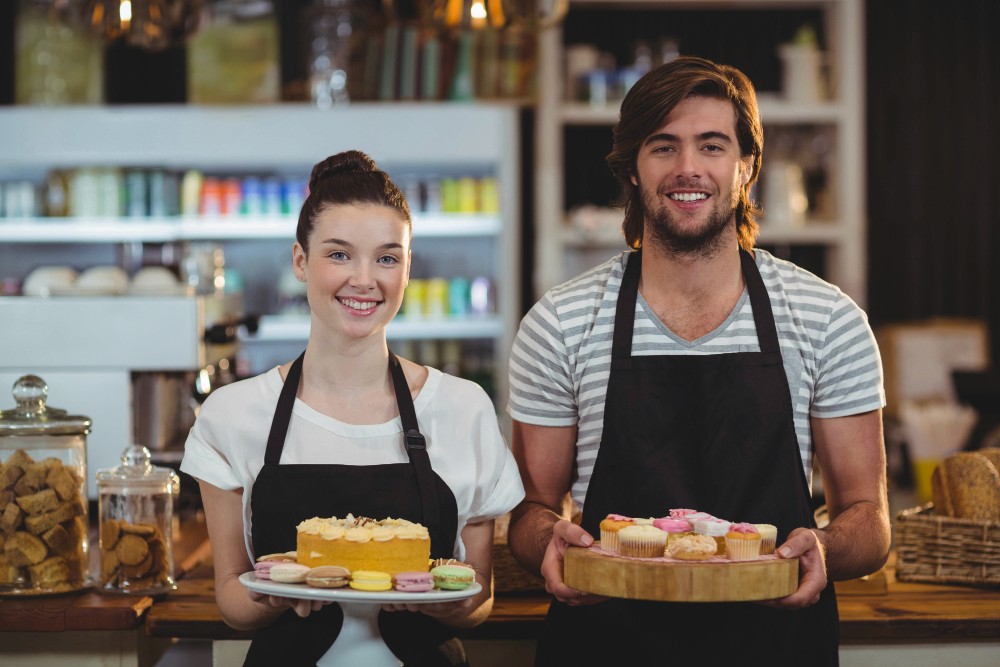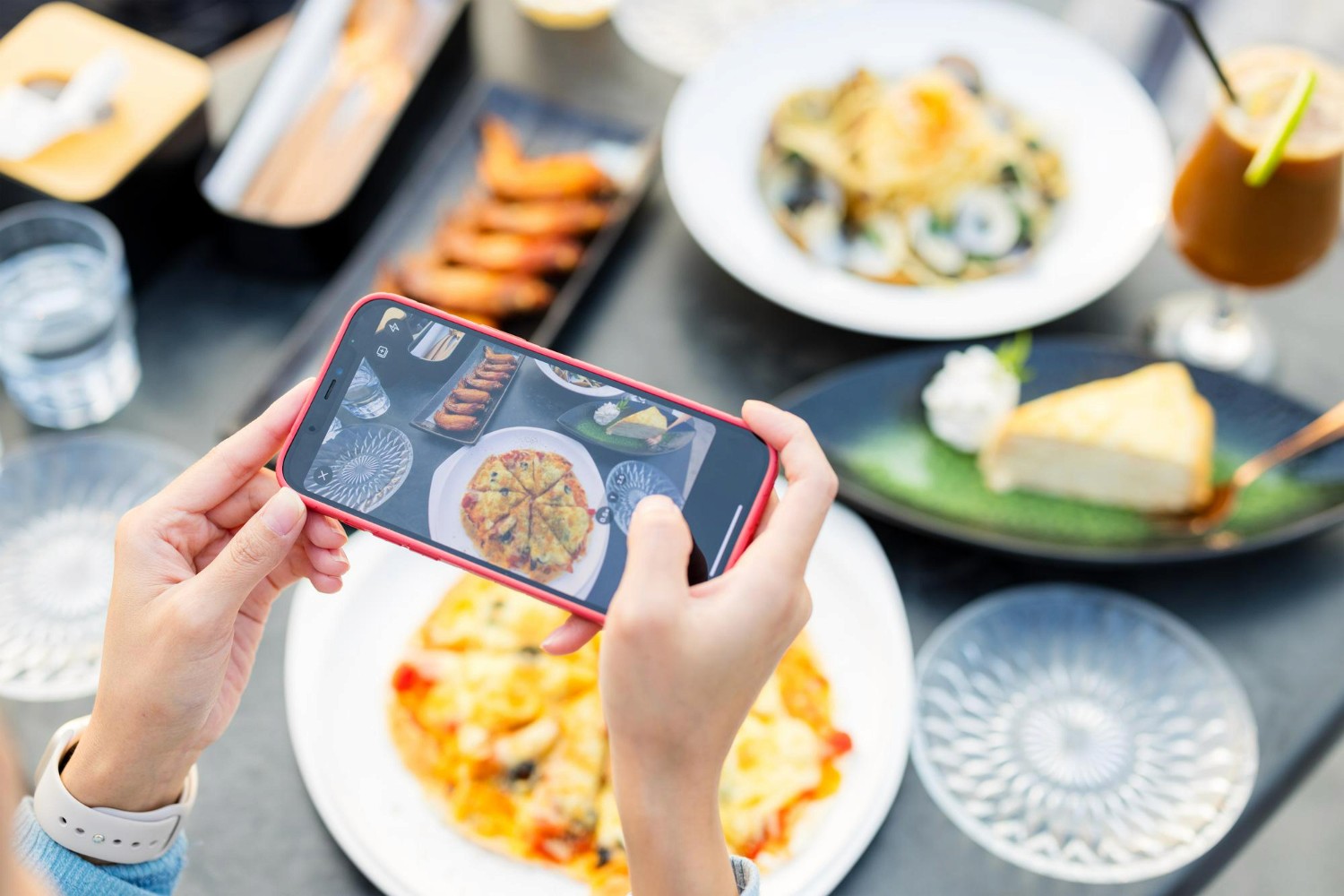The past few years have had a tremendous effect on the hospitality and food-and-beverage industries. To keep up with growing demand, create and improve guest experiences, and take their marketing up a notch, restaurants have had to evolve.
One important change F&B concepts have had to make is use technology to streamline operations. In other words, they’ve had to create and upgrade their restaurant tech stack.
This includes everything from software to manage staff, to accounting to kitchen and delivery technology.
So, what makes a restaurant’s tech stack? And who are the top providers for every tech solution an F&B concept may need?
Let’s find out.
What is tech stack in a restaurant?
Tech stack refers to the technology software and systems used in an organization. In this case, restaurants, eateries, and F&B and entertainment concepts.
Every organization, be it a startup, large enterprise, government establishment, or something, has its own tech stack.
For this article, we’ll be focusing on the restaurant tech stack.
Why do you need restaurant tech stack?
It’s important that the technology used in a restaurant helps that restaurant grow instead of holding it back.
Sometimes, restaurant managers and marketing managers may go in different directions. Each having their tech stack to manage their operations.
However, for a restaurant to operate efficiently, it’s imperative these various tech tools operate harmoniously and easily integrate with one another.
Here are other reasons restaurants today should rely on technology. They don’t have to be considered ‘high tech restaurants’ but technology helps them in several ways.
1) Save time, money, energy
Technology can help restaurant owners, managers, and marketers cut down on the time, money, and energy spent running the business.
2) Streamline operations
Day-to-day activities can get hectic. Especially during high seasons like summer, holidays, or special occasions like Valentine’s Day, New Year's Eve or Christmas.
That’s why having an effective tech stack for your restaurant can help you streamline operations and ensure a smoother workflow.
Whether it’s managing reservations and waitlists to managing shifts based on businesses and higher workloads to automating marketing efforts.
3) Enhance customer experiences
The hospitality industry is all about the guest experience. From the seating arrangements to the menus to the food to the ambience.
Experience plays a major role in guests enjoying their time and their meal and coming back for more.
Guest experience management software, like Servme, helps restaurants ensure a great experience every time using automated guest surveys and personalized experiences.
4) Personalization
Customers expect personalization in their experience with brands. This includes restaurants and F&B concepts. Personalization isn’t limited to ‘Hi [FirstName]’ in an email.
It can and should go beyond that. From recommending menu items based on previous orders to seating guests at their favorite tables or locations.
Top tools in a restaurant tech stack
Now let’s look at the top technology tools used in restaurants.
Tools to include:
Restaurant POS
In its simplest form, a point-of-sale (POS) system helps restaurants accept payments from guests.
However, modern restaurant POS systems do more than let you accept payments. They offer insights into customer behaviour and spending, which can translate to personalized dine-in experiences.
Top POS systems for F&B operators include: Oracle Simphony, Foodics, Infrasys, Syrve, Linga
Further reading: 7+ POS Systems for Restaurants & F&B Operators to Help Grow Business
Reservation and table management software
A restaurant reservation management system helps restaurants manage online and offline bookings and reduce no-shows and cancellations.
This software comes with a reservation widget, which can help you collect guest information and build your restaurant’s CRM.
Top reservation and table management systems include: Servme, Sevenrooms, Resy
Further reading: 11 Reasons Your Restaurant Needs SerVme’s Reservation Widget
Waitlist management software
Referred to as queue management system, waitlist management software helps F&B concepts manage online and offline waitlists.
Many reservation management systems come with waitlist management. They can also include automated guest notifications and SMS features to confirm reservations or being added to a waitlist.
Top waitlist software include: Servme, Eat App, Opentable
Restaurant marketing software
Restaurant marketing tools take various forms. They vary from those you can use to create, manage, and schedule posts on social media to email marketing and SMS marketing for restaurants.
Restaurant marketing software also includes channel integrations such as Tripadvisor, Zomato, where restaurants get an online listing
One of the top benefits of using restaurant marketing automation is being able to track traffic sources, top booking channels, and measure restaurant analytics.
It’s worth mentioning that many marketing automation tools can be used for a restaurant but they will lack industry-specific templates.
Top restaurant marketing software include: Servme, Mailchimp, Canva, Infobip
Further reading: Increase Direct Reservations using Facebook & Instagram with Servme
Social media scheduling software
To manage and speed up your restaurant’s marketing operations, you need to use social media scheduling tools. Almost every social media platform has its scheduling tool.
Meta platforms have the Business Manager tool and mobile app. You can use it to create and schedule posts on Facebook and Instagram. If you’re using Twitter or LinkedIn, you can schedule posts directly from either platform.
However, using all of these tools independently can be a hassle. Which is where social media scheduling software comes in. They let you schedule posts across multiple platforms with a couple of clicks.
Top social media scheduling software: Buffer, Hootsuite, Sendible, Metricool, SocialBee
Digital menu software
This is software that helps restaurant operators create digital menus.
From adding images and descriptions for mouth-watering dishes to having time-specific or day-specific menus, digital menu software is a great tool to have on your restaurant tech stack.
Top digital menu software include: Qlub, Sunday App, Yodeck, NoviSign, Servme
Kitchen display system (KDS)
The front-of-the-house isn’t the only busy space in a restaurant. The kitchen is quite hectic especially on weekends, holidays, and any time the restaurant is busy.
Having printed tickets with customers’ orders is a thing of the past.
Kitchen display systems (KDSs) are how restaurant kitchens ensure orders are queued in correctly and kitchen operations are smooth.
Aside from being environmentally friendly compared to printed tickets, there is a zero chance of the virtual kitchen tickets getting lost. Unlike their printed counterparts.
It can come at an initial investment but translates to longer-term savings on paper and ensures smoother operations. It integrates with your restaurant point-of-sale system.
The KDS is usually mounted on the wall in the kitchen and allows staff to see new and open orders on the screen. It can also display the status of orders.
Top kitchen display systems include: Oracle Simphony, Revel, Lightspeed, Foodics
Payments platform
One of the important tools in a modern restaurant’s tech stack is the payment platform. These help you accept on-premise payments and online payments such as deposits or full in-advance payments for ticketed events.
Payment platforms will vary by country and by region.
Some of the top payment terminals in the Middle East include: Network International, Stripe, Moyasar, Paymob, Planet, PayGCC, MyFatoorah
Inventory management software
An inventory management system is essential in your restaurant tech stack. It helps you keep track of your stock, monitor your inventory, track food costs and more.
Many restaurant POS systems come with a built-in inventory management system. You will have to inquire about each.
Top restaurant inventory management systems include Supy, Toast, Foodics, MarketMan
HR or people management software
HR software can take many forms. The human resources management system (HRMS) is the most common.
An HRMS can track arrival and departure times for your staff, facilitate vacation day requests, and streamline the onboarding of new employees. It also assists in managing shifts, overtime, and absenteeism, and can be integrated with your payroll software for seamless operations.
Top HR software include: ZenHR, Bamboo HR, Zoho, Toast, Sage HR, 7shifts
Payroll and accounting software
Payroll is one of the top areas of spending for a restaurant business. So, using payroll and accounting software can speed up and streamline various financial operations.
From managing and automating your tax payments and direct deposits for paying your staff, payroll and accounting software are important tools in your restaurant tech stack.
Some POS systems include payroll add-ons, while others support payroll and accounting integrations.
Similarly, some payroll and accounting systems can be integrated into your restaurant management system ensuring smoother operations for all.
Top accounting and payroll software include: QuickBooks, Gusto, OnPay, Bill.com, Odoo, BambooHR, Oracle NetSuite
Delivery aggregators
Working with delivery aggregators is one of the ways restaurants can increase their sales. While not all restaurants offer food delivery, many have begun doing so since the pandemic.
The delivery aggregators you can integrate or partner with will depend on the region and country you’re operating from.
Top food delivery aggregators in the Middle East include: Talabat, Noon Food, Uber Eats, Careem Mrsool, Deliveroo, Hungerstation, Jahez
Top food delivery aggregators in the United States include: GrubHub, DoorDash, Uber Eats, Postmates.
Top food delivery aggregators in Europe include: Bolt, Deliveroo, Glovo, GrubHub, Just Eat
Conclusion
You don’t have to be a high-tech restaurant to have a tech stack. But if you want to drive your business forward, using various restaurant and food service technologies is crucial.
It’s also important to keep an eye on new and emerging technology in the restaurant industry. Restaurant tech tools aren’t the latest shiny gadget. They can help streamline and speed up various front-of-house or back-of-house workflows.
For example, using a reservation, waitlist, and table management system can help you integrate with many of the abovementioned tools.
Case in point, Servme offers
Reservation management
Table management
Waitlist management
Digital menus
Automated email and SMS marketing campaigns
Automated guest surveys
Integrations for POS, payments, booking channels, and others
Frequently Asked Questions about Restaurant tech stack
Q: Do I need all of the above tools in my restaurant tech stack?
A: No, you don’t. It depends on the size of your restaurant and offerings. If you’re just starting out and have a 5-item menu, then a printed menu maybe a good option for you. When you expand, you can use digital menu software.
Similarly, if you’re not planning to use email marketing for your restaurant in your early months, you may wait to get this type of software.
However, if email and SMS marketing software is available in your table management software then it’s a double win. You can use the email and SMS features when you’re ready to use them.
Q: Do all reservation management systems have email and SMS marketing software?
A: No, not all reservation and table management systems do. However, the larger ones do. Email and SMS features aren’t just for sending restaurant newsletters or email campaigns. They’re a great tool for improving guest experiences and growing your sales.
Further reading
How to Create a Restaurant Floor Plan that Entices Guests
How to Create a Restaurant No-Show Policy [Templates Included]
How to Increase Restaurant Reservations: 13+ Revenue-Boosting Tips
Your Guide to Restaurant Email Subject Lines for Better Conversions
Reserve with Google for Restaurants: What Is It & How It Works
How to Make the Most of SerVme’s Restaurant Table Management Software
Nada Sobhi
Operations



